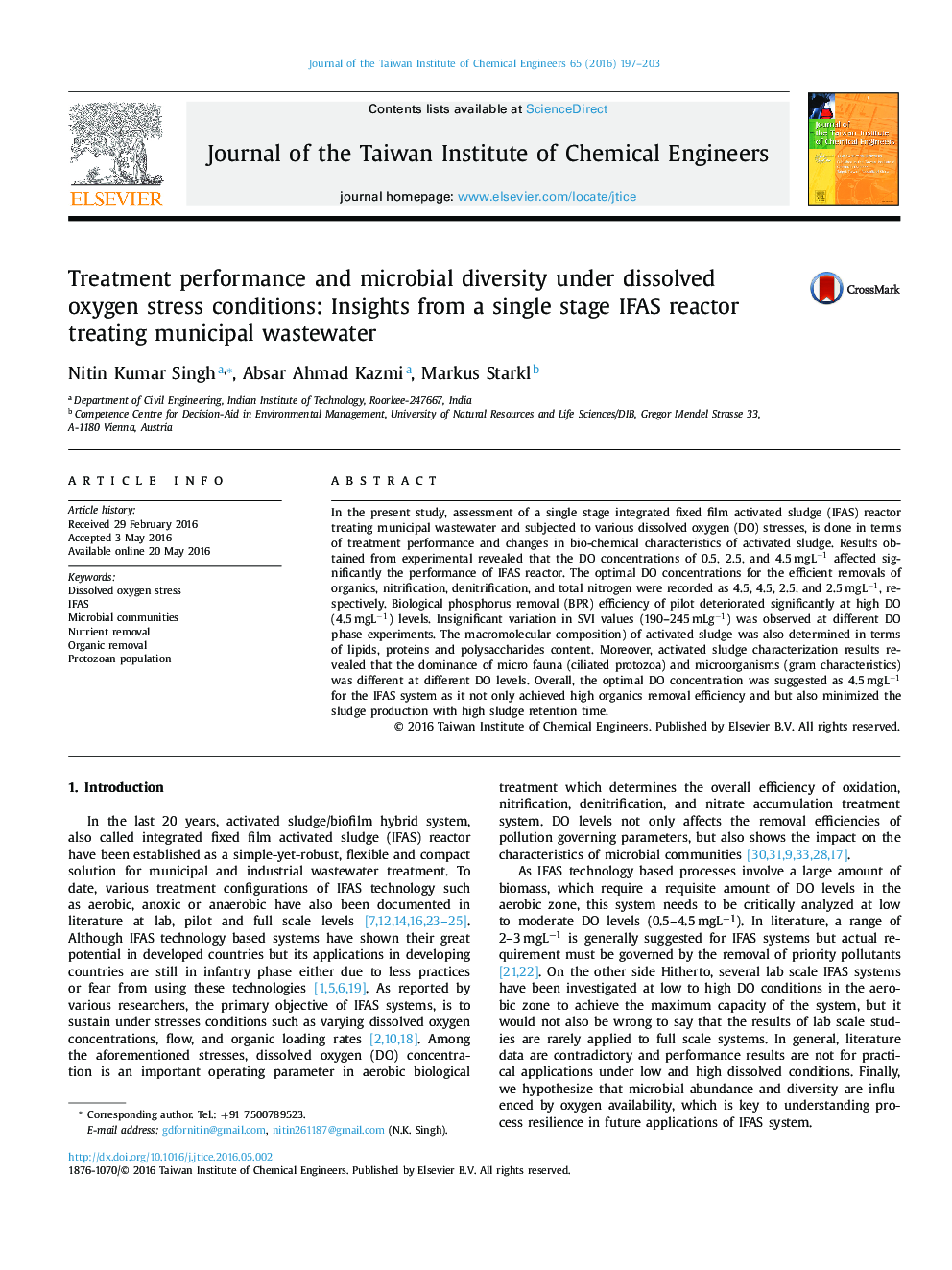| کد مقاله | کد نشریه | سال انتشار | مقاله انگلیسی | نسخه تمام متن |
|---|---|---|---|---|
| 690214 | 1460409 | 2016 | 7 صفحه PDF | دانلود رایگان |

• Treatment performance of an IAFS reactor under different DO stresses is presented.
• Significant changes were observed in bio-chemical composition of activated sludge.
• Dominancy of gram bacteria changed from positive to negative with increase of DO.
• Protozoan population was observed minimum at low DO conditions.
In the present study, assessment of a single stage integrated fixed film activated sludge (IFAS) reactor treating municipal wastewater and subjected to various dissolved oxygen (DO) stresses, is done in terms of treatment performance and changes in bio-chemical characteristics of activated sludge. Results obtained from experimental revealed that the DO concentrations of 0.5, 2.5, and 4.5 mgL−1 affected significantly the performance of IFAS reactor. The optimal DO concentrations for the efficient removals of organics, nitrification, denitrification, and total nitrogen were recorded as 4.5, 4.5, 2.5, and 2.5 mgL−1, respectively. Biological phosphorus removal (BPR) efficiency of pilot deteriorated significantly at high DO (4.5 mgL−1) levels. Insignificant variation in SVI values (190–245 mLg−1) was observed at different DO phase experiments. The macromolecular composition) of activated sludge was also determined in terms of lipids, proteins and polysaccharides content. Moreover, activated sludge characterization results revealed that the dominance of micro fauna (ciliated protozoa) and microorganisms (gram characteristics) was different at different DO levels. Overall, the optimal DO concentration was suggested as 4.5 mgL−1 for the IFAS system as it not only achieved high organics removal efficiency and but also minimized the sludge production with high sludge retention time.
Journal: Journal of the Taiwan Institute of Chemical Engineers - Volume 65, August 2016, Pages 197–203